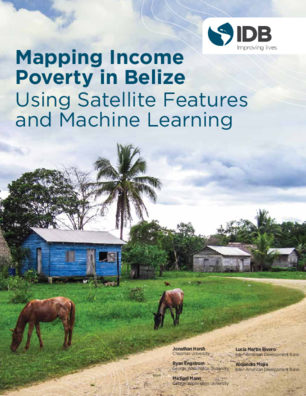Mapping Income Poverty in Belize Using Satellite Features and Machine Learning
Date issued
May 2020
Subject
Machine Learning;
Social Innovation;
Big Data;
Poverty;
Labor Force;
Open Source;
Rural Area;
Poverty Level;
Household Income
JEL code
O31 - Innovation and Invention: Processes and Incentives;
I38 - Government Policy • Provision and Effects of Welfare Programs;
O35 - Social Innovation;
I32 - Measurement and Analysis of Poverty
Country
Belize
Category
Monographs
This study creates poverty maps for Belize leveraging free and open source methodologies that link satellite imagery and existing survey data with machine learning. Belize is an exemplar of country for which Big Data and machine learning hold promise for generating poverty maps at a reduced cost as the last poverty assessment was conducted in 2009 and no consumption survey with the intention of producing sub-national estimates of poverty has been conducted since then. Even though poverty mapping provides clear information about the location and extent of poverty within a country, mapping the spatial distribution of poverty or incomes within a country remain a challenge for countries. Budget constraints restrict the use of poverty maps for policy targeting, leading to waste and inefficiency. This paper investigates how small area estimates of average income may improve when incorporating features derived from Sentinel-2 and MODIS imagery. The results indicate that the poorest districts are Corozal, in the north, and Toledo, in the south, and suggest reduction in poverty for the districts of Orange Walk and Stann Creek in the last decade.
Generative AI enabled




